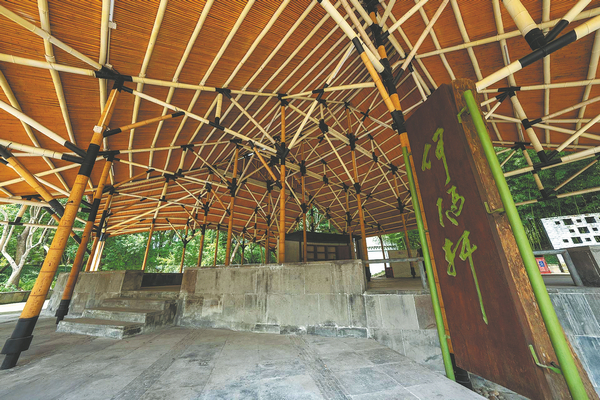

Feng included the Helou Xuan tea house in a new park he was invited to design around an ancient pagoda in Songjiang district in the late 1970s.
Fangta, or the Square Pagoda, is a nine-level tower that was built as part of a Buddhist temple in the 11th century. The temple was later destroyed but the pagoda survived. Over the centuries, it underwent multiple restorations, with the latest taking place between 1974 and 1977.
A fine example of ancient Yangtze River Delta Buddhist pagodas, it has managed to preserve most of its original wood structure, and was listed in 1996 as a national treasure and is known as representative of the cultural essence of the Song Dynasty (960-1279).
In his design for the park, Feng sought to preserve the spirit of Song Dynasty culture and create an outdoor museum as a park, according to his daughter, Feng Ye.
According to Wang Shu, China's first Pritzker prize winner (architecture's Nobel), Feng Jizhong's approach also reflected the influence of modern architecture. Wang believes the design and planning of Fangta Park is second to none in China and praises the design of the park and the Helou Xuan teahouse as masterpieces that represent the essence of Chinese aesthetics and philosophy.
Fangta is around 12 hectares in size. Aside from the ancient pagoda, it is also home to a series of important cultural remains, including a brick screen wall built in 1370, which is one of the finest and best preserved tiled walls in China, and which features a monster with antlers like a deer, a tail like a lion, scales of a fish and hoofs of an ox.
The Temple of the Queen of Heaven, the largest Mazu Temple in Shanghai, was also relocated to the park from Suzhou Creek.